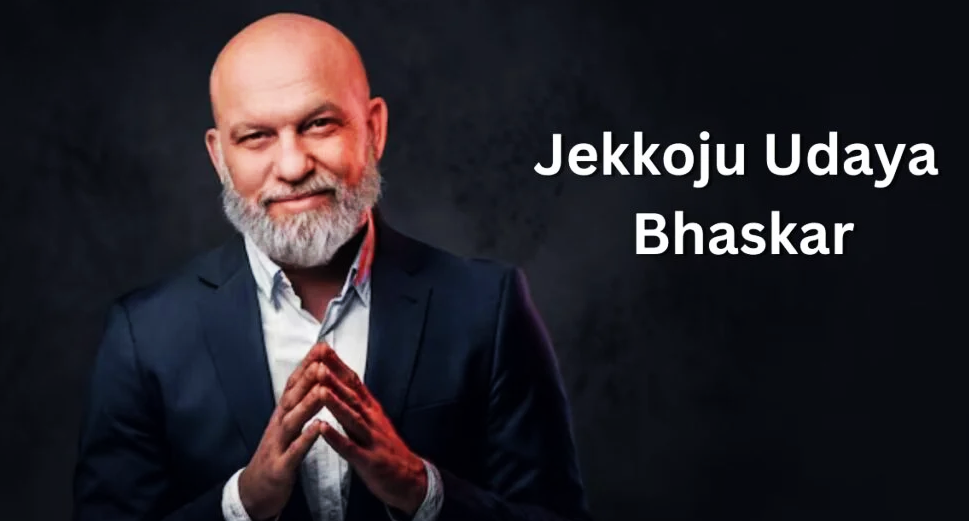Introduction to Jakkoju Udaya Bhaskar and his work
Cultural preservation is a crucial yet often overlooked aspect of our society, with individuals like Jakkoju Udaya Bhaskar stepping into the spotlight as unsung heroes. With a deep-rooted passion for safeguarding India’s rich cultural heritage, Bhaskar has dedicated his life to ensuring that traditional art forms and practices are not lost to time. From intricate craftsmanship to vibrant folk traditions, his work resonates deeply within communities and beyond. As we delve into the world of Jakkoju Udaya Bhaskar and explore the importance of cultural preservation, prepare to be inspired by stories of resilience and commitment that remind us all why preserving culture matters now more than ever.
The importance of cultural preservation and the role of individuals like Bhaskar
Cultural preservation is vital in maintaining the fabric of society. It connects generations, weaving a rich tapestry of history and identity. When traditions fade away, so do the stories that shape us.
Individuals like Jakkoju Udaya Bhaskar play an essential role in this process. They are often the torchbearers, working tirelessly to keep cultural practices alive. Their dedication helps ensure that future generations can appreciate their heritage.
Bhaskar’s efforts illustrate how one person can spark change within communities. By documenting local customs and promoting traditional arts, he raises awareness about their significance.
Moreover, preserving culture fosters unity among diverse groups. It builds bridges between people who share similar roots but may have lost touch with them over time. This sense of belonging reinforces communal ties and encourages collaboration for a common cause—in this case, safeguarding our collective legacy.
Examples of Bhaskar’s impact on preserving Indian culture
Jakkoju Udaya Bhaskar has made significant strides in preserving Indian culture through various initiatives. His commitment to reviving traditional art forms is commendable. He holds workshops that teach ancient crafts, ensuring the skills are passed down to younger generations.
Bhaskar also documents folklore and oral traditions, capturing stories before they fade away. This work preserves not just the tales but the rich tapestry of emotions and lessons woven into them.
His involvement with community festivals adds another layer of impact. By organizing events that celebrate local customs, he fosters a sense of pride and belonging among participants.
Collaborating with schools, Bhaskar introduces cultural education programs. These initiatives inspire children to appreciate their heritage early on, embedding a love for tradition in their hearts.
Through these avenues, Jakkoju Udaya Bhaskar brings attention to the importance of cultural roots while actively engaging communities in the preservation process.
Challenges faced by cultural preservationists
Cultural preservationists encounter numerous challenges in their quest to safeguard heritage. One significant hurdle is the lack of funding. Many initiatives depend on grants and donations, which can be scarce.
Another challenge lies in changing societal values. As globalization spreads, traditional practices often fade away to make room for modern trends. This shift can erode community support for preserving cultural identities.
Legal issues also complicate matters. Intellectual property rights may not adequately protect cultural artifacts or knowledge, leaving them vulnerable to exploitation.
Additionally, there’s a struggle against misinformation and apathy within communities themselves. Some individuals may prioritize economic development over cultural preservation, viewing it as an obstacle rather than a benefit.
Natural disasters pose a constant threat. Earthquakes, floods, and climate change can destroy historical sites overnight—making prevention all the more critical yet difficult to achieve amidst these various pressures.
Other notable figures in the field of cultural preservation
Cultural preservation is a collective effort, and several notable figures have made significant contributions alongside Jakkoju Udaya Bhaskar.
One such individual is Dr. Ananda Coomaraswamy, who was pivotal in bringing Indian art and culture to the Western world. His writings emphasized the philosophical depth of Indian traditions.
Another key figure is Smt. Kamaladevi Chattopadhyay, known for reviving traditional crafts in India post-independence. Her dedication helped artisans regain recognition and sustain their livelihoods.
Additionally, UNESCO plays a crucial role by promoting global cultural heritage through initiatives that safeguard intangible assets like music, dance, and oral traditions.
These individuals show that cultural preservation can take many forms—whether through academia, arts advocacy or international collaboration—all contributing to a richer global tapestry of human experience. Each story adds depth to our understanding of cultures worldwide while inspiring future generations to keep these legacies alive.
How individuals can contribute to preserving their own culture
Individuals play a crucial role in cultural preservation. One of the simplest ways to contribute is by engaging in local traditions and practices. Attend festivals, participate in rituals, and learn traditional crafts.
Sharing stories with younger generations helps keep culture alive. Encourage kids to ask questions about their heritage and teach them about family customs.
Volunteering for local cultural organizations can make a significant impact. These groups often work to document, celebrate, or revive aspects of culture that may be fading away.
Social media is another powerful tool. Use it to highlight your community’s unique practices or promote events that showcase cultural heritage.
Support local artists and artisans who reflect traditional styles through their work. By purchasing handmade goods, you help sustain those skills for future generations while honoring cultural craftsmanship.
Conclusion: The lasting legacy of Jakkoju Udaya Bhaskar and the importance of
Jakkoju Udaya Bhaskar’s influence on cultural preservation is profound. His dedication to safeguarding India’s rich heritage resonates deeply within communities.
His work inspires future generations to embrace and cherish their roots. By documenting traditions, he creates a bridge between the past and the present.
The significance of his efforts extends far beyond mere artifacts or folklore; it nurtures identity and belonging. This is especially crucial in an era where globalization threatens local customs.
Bhaskar’s legacy encourages individuals everywhere to take an active role in preserving what makes their culture unique. Each small effort contributes to a larger tapestry of human history.
As society evolves, remembering those like Jakkoju Udaya Bhaskar becomes essential. They remind us that cultural richness enriches our lives and fosters understanding among diverse communities.
FAQs
Jakkoju Udaya Bhaskar has emerged as a beacon of hope in the realm of cultural preservation. His dedication and passion serve as an inspiration for many. The importance of preserving culture cannot be overstated, especially in our rapidly changing world.
Individuals like Bhaskar remind us that everyone has a role to play. Their efforts create ripples that can lead to significant change. Cultural heritage is not just about artifacts; it represents stories, traditions, and identities that shape communities.
While challenges abound—such as funding constraints and lack of awareness—cultural preservationists continue their vital work against all odds. They forge paths where none existed before, often relying on grassroots support from local communities.
There are others out there making strides in this field too. Figures who work tirelessly alongside Jakkoju Udaya Bhaskar help ensure that our connection to the past remains intact for future generations.
Each one of us can contribute by learning about our own cultures and sharing them with others. Simple acts like documenting family histories or participating in local cultural events can make a difference.
The legacy left by Jakkoju Udaya Bhaskar is profound, reminding us all of the power inherent in nurturing what we hold dear.
FAQs
Q: What motivated Jakkoju Udaya Bhaskar to focus on cultural preservation?
A: Jakkoju Udaya Bhaskar was inspired by his love for Indian history and tradition, recognizing the need to keep these rich heritages alive amidst modernization.
Q: How does cultural preservation benefit society?
A: Cultural preservation fosters community identity and pride while ensuring diverse traditions are celebrated rather than lost over time.
Q: Can anyone participate in preserving culture?
A: Absolutely! Individuals can engage through education, participation in festivals, volunteering with museums or organizations dedicated to heritage conservation.
Q: What challenges do cultural preservationists face today?
A: They often encounter financial limitations, bureaucratic hurdles, and sometimes apathy from younger generations who may not recognize the value of their heritage.

















